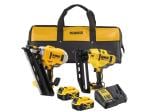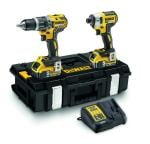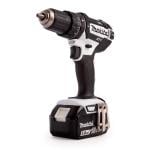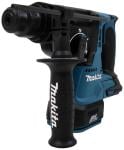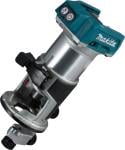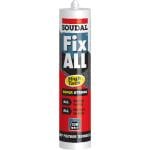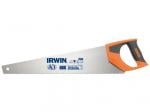What Is an Impact Driver (and What Is It Used For)?
When you are browsing the internet or nosing in a DIY store, finding the perfect tool for the job can be rather difficult. To the uninitiated, choosing between a hammer drill, cordless drill or impact driver is a rather daunting decision…what even is an impact driver?! If you are feeling a little green, don’t be embarrassed. Some qualified tradesmen have been in the game for many years who don’t know every single type of power tool and all of their uses. But you don’t have to. What’s important is identifying the right tools for the type of work that you plan to carry out. In this article, as you may have already guessed, we’re going to shed some light on the Impact Driver, giving you everything you need to decide as to whether or not this awesome tool is for you.
What is an Impact Driver? (Power Tools Explained)
Think of an impact driver as a drill on steroids. Where a regular drill rotates a fastener into place, an impact driver adds a hammering force to get the job done. So, how does it work? An impact driver combines the rotational force of a drill, with bursts of impact similar to that of a hammer drill to fasten through points of resistance with ease. Kind of like a drill and a hammer drill having a baby and creating the best of both worlds.
What’s the Difference Between an Impact Driver and a Hammer Drill?
There are several differences between an impact driver and a hammer drill, but the biggest differentiation is the type of force that is used:
- A hammer drill uses a hammering action to create the extra force which is needed to penetrate tougher materials. The drill spins debris out of the hole as the hammering function drives the bit in further.
- An impact driver uses rotational force to drive a screw into a material, saving bursts of power for moments of fierce resistance.
An impact driver is typically much lighter than a hammer drill, thus making them much easier to handle. In addition to that, both hammer drills and impact drivers are used for different purposes which we will get to shortly.
Impact Drivers Are Best Used When Driving Large Bolts and Screws
Impact drivers handle large screws and bolts almost effortlessly when compared to your standard compact drill. This is because they automatically apply additional rotational force as soon as any resistance is encountered. The additional torque applied in these situations is often two to three times more powerful than a standard drill. In addition to that, you’ll find an impact driver is much easier on your hand and wrist.
What Can’t an Impact Driver Do?
Impact drivers, unlike regular drills, do not have any variable speed settings. You could say that they are an ‘all or nothing kind of tool, best used when serious power is required. If precision is what you are looking for, then an impact driver is not the best-suited tool for the job. You should also bear in mind that impact drivers (despite the name) are not suitable for drilling into hard substances such as concrete or brick, where a hammer drill would be more appropriate. And whilst impact drivers are specifically designed for driving fasteners as opposed to drilling holes, you can indeed use them for drilling a hole if you find yourself in a bind; light-gauge steel and softwood, using a standard hex-shank drill bit. Otherwise, leave the drilling to the power tools that were designed for such.
I’m into DIY, Do I Need an Impact Driver?
It all depends on the type of DIY projects that you plan to undertake. If you are only really focusing on home repairs, then a regular cordless drill will serve you well enough (most drills are rather versatile). That being said, as you progress and start to explore different projects, you will likely need to expand your toolbox and an impact driver will be a quality addition.
Impact Drivers Are Better Suited to Larger Projects
Let’s say you are putting up a pergola or permanent marquee structure in your garden; this is a good example as to when an impact driver will come in handy, as you’ll need to be driving in large bolts to secure the beams properly. Similarly, when working with any hardwood, heavy steel, or pressure-treated timber, an impact driver will have the torque to help bore into these materials with great ease.
What is the Best Type of Impact Driver?
Choosing the perfect impact driver to add to your tool kit depends on the projects that you plan to be tackling in the future. If you aren’t quite sure at this stage, please feel free to contact us and we can talk you through the various options that we have. In any case, we hope you have found this article helpful and wish you the best of luck with your future projects!


